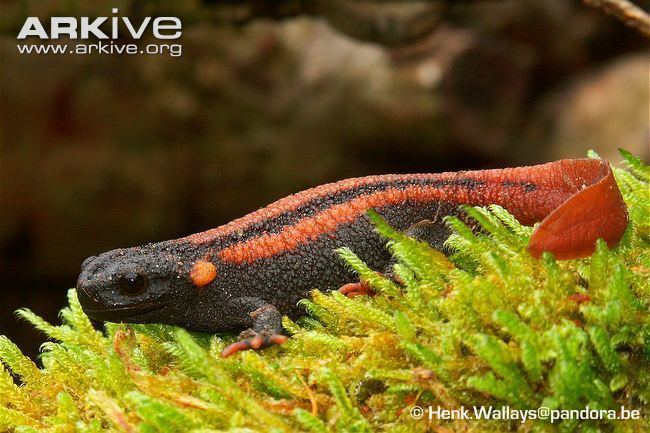Order Caudata Rank Species | Phylum Chordata Higher classification Tylototriton | |
 | ||
Scientific name Tylototriton kweichowensis Similar Tylototriton, Tylototriton shanjing, Black knobby newt, Salamander, Amphibians | ||
Red tailed knobby newts tylototriton kweichowensis in new tank
The red-tailed knobby newt or Kweichow (crocodile) newt (Tylototriton kweichowensis) is a species of salamander in the Salamandridae family. It is found in western Guizhou ("Kweichow" being an old spelling of Guizhou) and north-eastern Yunnan, China. It is most closely related to emperor newt (Tylototriton shanjing) and Himalayan newt (T. verrucosus).
Contents
- Red tailed knobby newts tylototriton kweichowensis in new tank
- Red tailed knobby newts tylototriton kweichowensis
- Description
- Distribution
- Diet
- Toxicity
- Captivity
- References
Red tailed knobby newts tylototriton kweichowensis
Description
The red-tailed knobby newt is a relatively large, robust newt. Their total length is 155–210 mm (6.1–8.3 in), females being larger than males.They live in small ponds, slowly flowing streams and surrounding shady and moist grassy slopes with many hiding places. Outside the reproductive season, they are rather terrestrial. The reproductive season is from early May to early July, coinciding with the rainy season.
Distribution
The red-tailed knobby newt has been recorded in Bijie, Dafang, Hezhang, Nayong, Shuicheng, Weining, and Zhijin counties of western Guizhou, and Yiliang and Yongshan counties in northeastern Yunnan (Zhao 1998).
Diet
The red-tailed knobby newt feeds on worms,insects,larva, and their smaller newts. They can ingest small frogs and small toads. In captivity they often eat wax worms, mealworms, crickets, and even small fish like guppies.
Toxicity
The red-tailed knobby newt is a highly toxic newt. They can kill a human that has a weak body or a baby. The Kweichow Crocodile Newt (T.kweichowensis) is part of the Genus known Tylototriton which consists of 11 known subspecies and possibly even more yet to be named. All Tylototriton are considered highly toxic due to their defense mechanism which is being able to use the tips of its ribs to pierce the insides of the Orange Warts along its sides which secrete the toxin. However they are a fairly docile species so this rarely can happen.
Captivity
In captivity they should have a 15-20 gallon tank for housing two or three newts. 5-10 gallon tank is best to house one newt. 40-60 gallon tank for housing 5 or six newts. They are common in captivity now.
